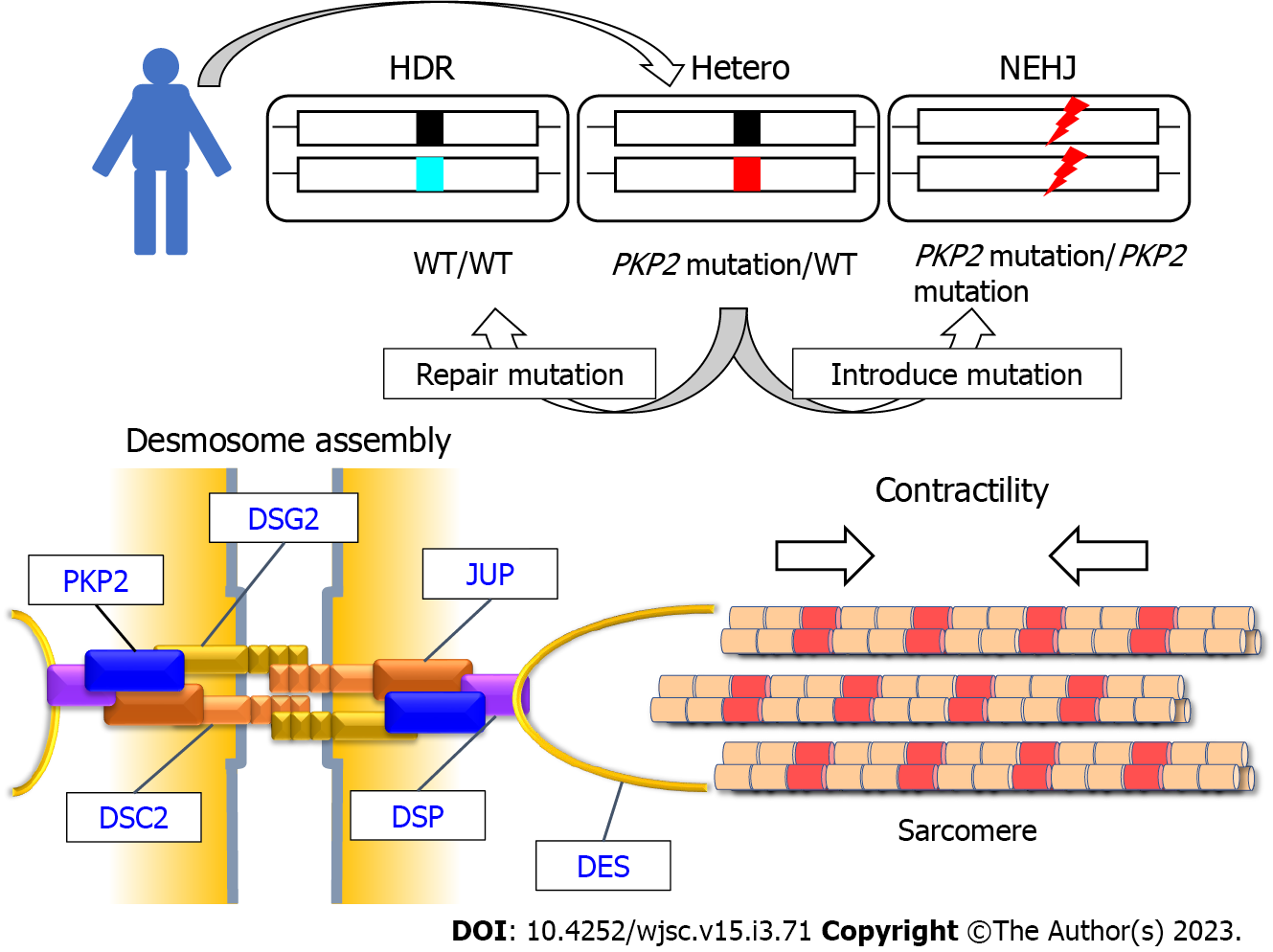Copyright
©The Author(s) 2023.
World J Stem Cells. Mar 26, 2023; 15(3): 71-82
Published online Mar 26, 2023. doi: 10.4252/wjsc.v15.i3.71
Published online Mar 26, 2023. doi: 10.4252/wjsc.v15.i3.71
Figure 1 Modeling impaired desmosome assembly and reduced contractility using isogenic induced pluripotent stem cell-derived cardiomyocytes with the precisely adjusted dose of PKP2.
Heterozygous frameshift mutation in patient-derived induced pluripotent stem cells (iPSCs) was repaired through homology-directed repair. Homozygous frameshift mutations were introduced in PKP2 through non-homologous end joining in patient-derived iPSCs. The generated isogenic iPSC-derived cardiomyocytes with the precisely adjusted expression of PKP2 recapitulated impaired desmosome assembly and reduced contractility caused by PKP2 deficiency. Desmosomal cadherin proteins (DSG2 and DSC2) form homo-dimers and hetero-dimers. PKP2 is a scaffold protein for desmosomal cadherins, JUP, and DSP. Desmosomes are linked to sarcomere structure via the intermediate filament protein DES that targets both desmosome and Z disc structure. HDR: Homology-directed repair; NEHJ: Non-homologous end joining; Hetero: Heterozygous mutation.
- Citation: Higo S. Disease modeling of desmosome-related cardiomyopathy using induced pluripotent stem cell-derived cardiomyocytes. World J Stem Cells 2023; 15(3): 71-82
- URL: https://www.wjgnet.com/1948-0210/full/v15/i3/71.htm
- DOI: https://dx.doi.org/10.4252/wjsc.v15.i3.71









